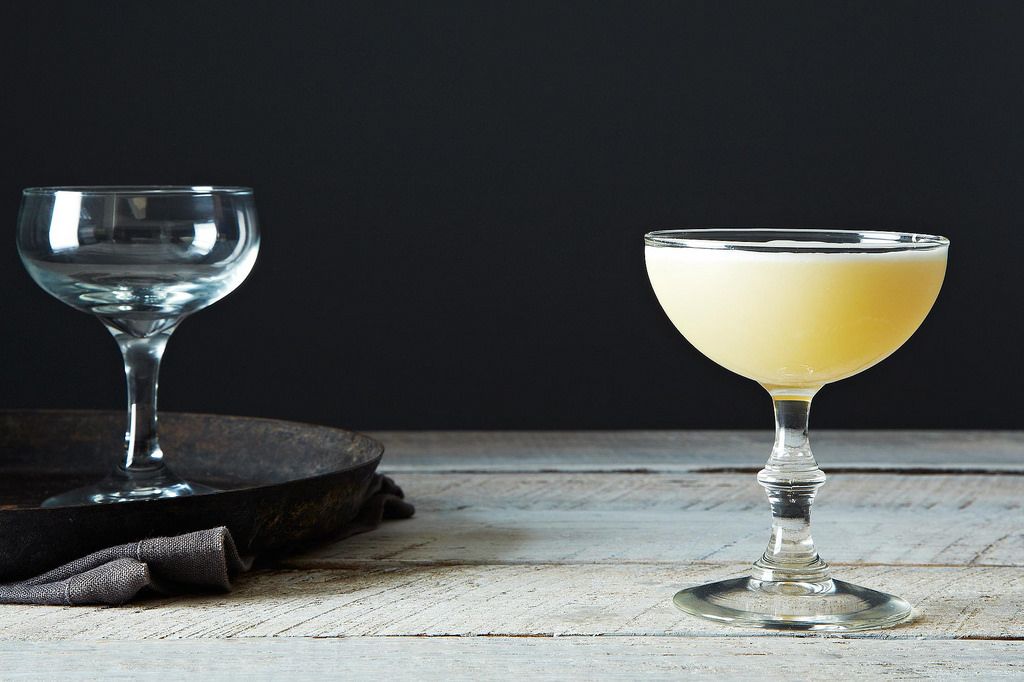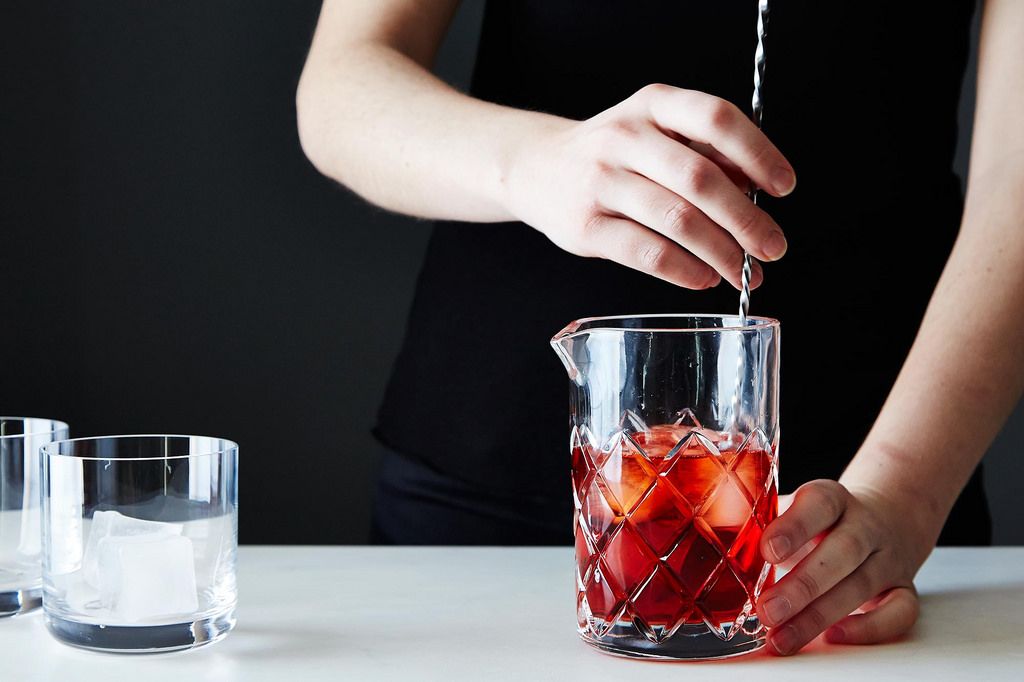When he's not busy running the cocktail program at New York City's Maialino, Erik Lombardo is giving us the rundown on all things spirits -- and showing us the best ways to drink them.
Today: 6 simple (and cheap) ways to perfect your at-home cocktails.

Let’s face it: The drinks you make at home may not be as good as the drinks you get in your favorite cocktail bar. The reasons for this are many, not the least of which is the fact that you probably aren’t a professional bartender. Let the following 6 tips help to close the gap, and you'll be stirring and shaking your way to inebriated bliss in no time.
1. Use better ice. Ice matters: It accounts for close to 1/3 of the final product, so this is really one of the fastest ways to improve what you’re making at home. Right off the bat you should be using ice cubes that measure at least 1 inch per side. The crescent-shaped ice that comes out of automatic ice machines in fancy refrigerators is no good, ditto the mini cubes. These Tovolo ice cubes are perfect for highballs, but for drinks you want on the rocks, you really want a huge chunk of ice, just big enough to fit in the glass you’re serving it in (these and these work well, or try making your own at home). This maximizes volume to surface area, giving you the most chilling power and control over dilution.
2. Chill your glassware. You spend all that time to make the perfect cocktail and get quality ice, then you pour it into a glass that has been sitting in a cupboard over your oven. Cocktails are best when ice cold, so do yourself a favor and throw your glassware in the freezer when you start to prepare you drink. Take it out only when you’re ready to fill it with your delicious cocktail.

3. Know when to shake, and when to stir. Enough said.
4. Treat your ingredients appropriately. Vermouth and aromatized wines need to be refrigerated to prevent them from oxidizing too quickly. If you have a dusty bottle of vermouth on the liquor shelf, throw it out and buy a fresh one. It may seem like a waste, but the real waste would be thinking you don’t like dry vermouth in Martinis because the dry vermouth you used was produced the same year the Matrix was.
5. Juice and zest to order. Resist the urge to juice a whole bunch of lemons and limes at once. You may think you’re saving time, but lemons and limes begin to react with oxygen almost instantaneously. Do yourself a favor and invest in a citrus juicer like this one, or this one (if you’re super fancy). Cut and juice your fruit as you go so that you can get the freshest flavors into you cocktail. Also: If your juice comes out of a plastic fruit, I don’t know you and you don’t know me.

6. Measure appropriately. Some people think that bars use jiggers in order to cut down on waste, and to be sure that’s a nice benefit. But the actual reason your favorite cocktail bar uses jiggers is to ensure consistency -- they want to be positive that you get the same exact cocktail every time you order it. To ensure that you’re making quality cocktails at home, get a jigger, find a recipe you like, and write it down (don’t be shy to ask your bartender what their specs are -- tell them you want to make it at home and they’ll likely be flattered). If you measure correctly and use the right technique, you’ll enjoy that cocktail at home as much as you do in the bar.
Photos by James Ransom




See what other Food52 readers are saying.